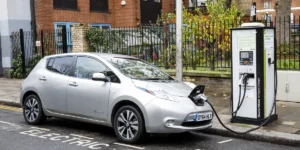Nissan’s recent announcement to end app support for its older electric vehicles (EVs) in the U.K. has raised eyebrows among EV owners.
This decision impacts pre-2016 Nissan Leaf and e-NV200 models that rely on 2G connectivity for features like remote heating control.
This aligns with the UK‘s telecom strategy, phasing out 2G by 2033 for advanced, secure, and resilient network technologies.
The end of 2G support isn’t just an issue for Nissan; it affects a variety of Internet of Things (IoT) and telematics devices.

As 4G and 5G networks emerge, adaptation is vital, balancing improved connectivity benefits with technology update costs.
For the automotive sector, this development emphasizes the disparity between the long-expected lifespan of vehicles and the rapidly changing landscape of digital technologies.
Clear communication and robust support from network providers and manufacturers will be crucial in easing this transition for consumers.
As digital connectivity advances, the auto industry balances innovation with vehicle longevity, ensuring consumers aren’t left behind.

